Online and Offline
10 Best Online to Offline Marketing Strategies & Examples in 2025
Mon, 25 Nov 2024 06:01:42 GMT
Speak to our Hyperlocal Expert
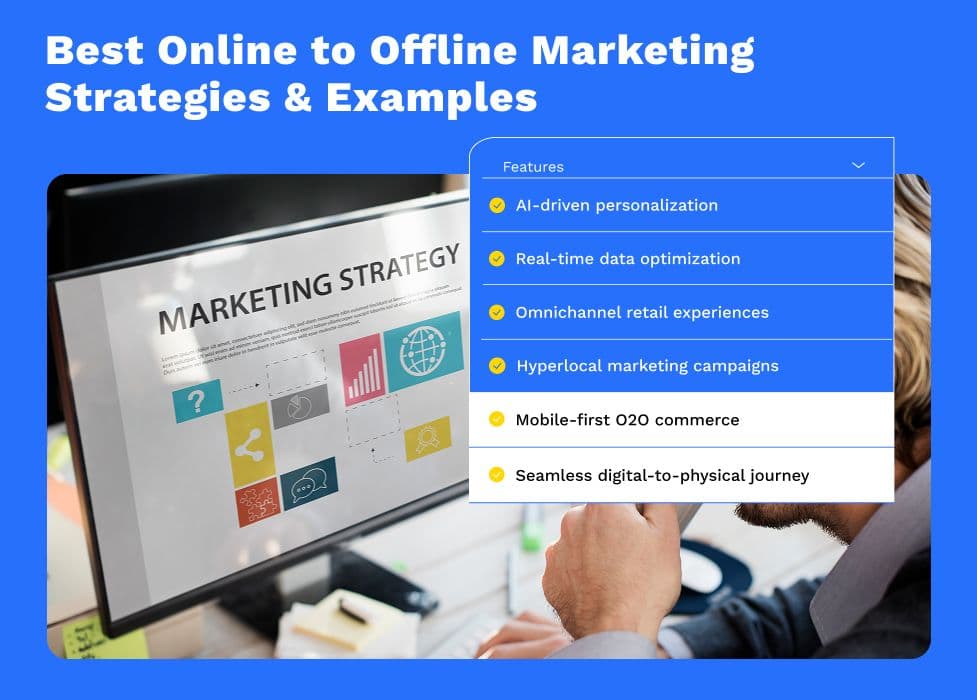
Editors Note: This post was originally published in Nov 2024 and is updated in Nov 2025 for accuracy and comprehensiveness.
Online to offline marketing connects digital and physical experiences, driving customers to take online actions that lead to offline interactions like in-store visits or purchases. It combines online ads, promotions, and local engagement to boost sales.
How can brands effectively bridge the gap between digital and physical experiences? Online to Offline (O2O) marketing is the solution. In 2025, this strategy is becoming increasingly important as businesses seek to combine online marketing strategies with offline activities to drive customer engagement and sales. O2O marketing connects digital touchpoints, like ads and promotions, with offline actions, such as in-store visits and purchases. By integrating the two, brands can create seamless customer journeys, boosting conversions both online and offline. Online to offline marketing examples include using targeted digital ads to drive foot traffic or offering exclusive online discounts for in-store purchases powerful online to offline strategies that enhance the overall customer experience. In this article, we explore the top online to offline marketing strategies and examples that can help you succeed in 2025.
What is Online to Offline Marketing?
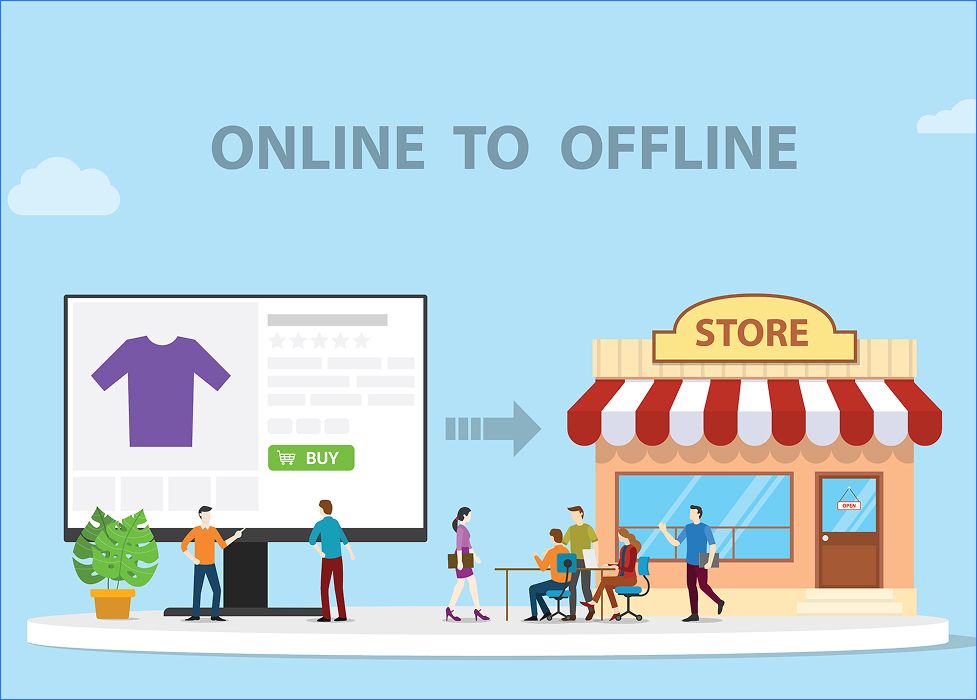
Online to Offline marketing is a strategy that connects the digital world with the physical world, aiming to drive customers from online platforms to offline stores. This approach combines online ads, offers, and promotions with in-store experiences, creating a seamless journey for consumers. By integrating digital touchpoints such as social media, emails, or online ads with physical store interactions, O2O marketing enhances the overall customer experience.
The core objective of O2O is to increase footfalls and in-store purchases, bridging the gap between online and offline shopping behaviours. Effective O2O marketing requires a seamless integration of online campaigns and offline experiences, ensuring customers are encouraged to take actions online that lead to real-world interactions and conversions. This strategy is essential for businesses looking to improve engagement and drive sales in both digital and physical spaces.
Online vs Offline vs Online-to-Offline Marketing
Factor | Online Marketing | Offline Marketing | Online-to-Offline (O2O) Marketing |
Objective | Drive digital visibility & online conversions | Increase physical store awareness & walk-ins | Connect digital engagement with in-store conversions |
Reach | Wide & scalable | Localised & limited | Hyperlocal & highly targeted |
Conversion Method | Website/app actions | In-store purchases | Click-and-collect, store visits, QR-based conversions |
Tracking | Strong analytics | Limited tracking | Advanced footfall attribution & real-time insights |
Best Use Case | E-commerce, lead generation | Local retail promotions | Multi-location retail, omnichannel journeys |
How Does Online to Offline Marketing Work?
Online to Offline marketing seamlessly integrates online to offline marketing strategies to influence purchasing decisions.
Online strategies include social media engagement, SEO, PPC ads, and email campaigns, which drive traffic and awareness. These tactics generate interest and direct potential customers to take offline actions, such as visiting physical stores or making in-person purchases.
On the offline side, brands use in-store promotions, direct mail, events, and experiential marketing to convert digital interest into physical action. Special offers, live demos, or exclusive in-store experiences encourage customers to engage with the brand offline.
Technologies like mobile apps, geotargeting, and data analytics power O2O marketing strategies, enabling businesses to track customer behaviour across both digital and physical touchpoints. By leveraging this data, brands can deliver personalised experiences and tailored promotions that drive real-world purchases.
Read Also - How Online to Offline Commerce Transforms Retail in 2025
Future Trends in Online to Offline Marketing
Online to offline marketing is entering a new phase where brands focus on creating deeply connected digital-to-physical experiences. As consumer behaviour shifts, the most effective Online to Offline Strategy will rely on smarter data usage, hyperlocal engagement, and seamless omnichannel retail journeys. These advancements are shaping how businesses drive in-store traffic, boost online to offline conversions, and deliver meaningful O2O campaigns. Below are the key trends defining the future of O2O commerce and O2O retail.
1. AI-Driven Personalisation
AI will enhance Online to Offline Marketing Examples by analysing customer behaviour and serving personalised offers that motivate in-store visits. This personalised approach strengthens O2O commerce by bridging digital engagement with offline purchase intent.
2. Growth of Mobile Commerce (M-Commerce)
Mobile apps are becoming central to O2O retail. Shoppers can browse online, check in-store availability, reserve items, and redeem location-driven offers. This mobile-first shift supports the Click-and-Collect Strategy and improves footfall attribution for brands tracking offline outcomes.
3. Strengthened Omnichannel Experiences
Omnichannel retail continues to evolve as brands connect websites, social commerce, email, and in-store promotions into one consistent journey. This unified approach improves online to offline conversions by ensuring customers feel guided from digital discovery to physical purchase.
4. Rise of Hyperlocal Marketing & Hyperlocal Ads
Hyperlocal marketing remains one of the best O2O Marketing Strategies. Location-based ads target customers near a store, delivering timely promotions that encourage immediate visits. These O2O campaigns help brands direct foot traffic precisely where it's needed.
Read also - Top 5 Examples of Location Based Marketing Campaigns in 2025
5. Expansion of Social Commerce
Social platforms are driving strong Online to Offline Marketing Examples. Customers discover products online through influencer content or social ads and then visit stores to test or purchase them. This digital-to-physical experience reinforces the power of combining social engagement with offline retail.
6. Real-Time Data Activation
Real-time data allows brands to personalise offers, track footfall attribution, and optimise promotions instantly. This ensures customers receive relevant incentives at the right moment, strengthening overall online to offline strategy performance.
These emerging trends clearly show that the future of online to offline marketing is shaped by hyper-personalisation, O2O commerce adoption, mobile-led behaviour, and data-driven decision-making. Together, these advancements create smoother digital-to-physical experiences and stronger O2O retail outcomes.
Benefits of Online to Offline Marketing for Retailers
1. Increase In-Store Footfall with Hyperlocal Targeting
Online to offline marketing strategies help retailers attract nearby customers through hyperlocal ads, geofencing, and personalised promotions. This drives immediate store visits and boosts overall online to offline conversions.
2. Improve Conversions with Seamless Digital-to-Physical Journeys
By offering smooth transitions from online browsing to offline purchases, retailers can reduce friction and increase sales. Click-and-collect strategies and other O2O commerce models remain some of the most effective online to offline marketing examples for driving higher conversion rates.
3. Enhance Personalisation Using Real-Time Data Insights
O2O marketing strategies powered by real-time analytics allow brands to personalise offers based on customer behaviour across all touchpoints. With platforms like Sekel Tech, retailers can optimise campaigns and deliver more meaningful, data-driven customer experiences.
4. Strengthen Customer Experience Across All Channels
A consistent online to offline strategy helps maintain unified messaging, pricing, and service quality across every channel. This builds trust, enhances satisfaction, and encourages repeat visits both online and in-store.
5. Enhance Local Discovery for Multi-Location Retailers
For brands with multiple stores, O2O strategies help guide customers to the closest and most relevant outlet. Sekel Tech’s store discovery features, real-time inventory visibility, and hyperlocal marketing strategy tools make it easier to capture demand across neighbourhoods.
10 Best Online to Offline Marketing Strategies for 2025
1. Online to Offline Strategy - Use Online Calls-to-Action (CTA) on Your Offline Promotions
Encourage offline customers to engage online via QR codes, discounts, or event invitations. Sekel Tech's hyperlocal geotargeting capabilities can trigger personalised CTAs based on a customer’s location, driving them to online offers when they are near a store.
2. Online to Offline Strategy - “To Be Continued” Campaigns
Create campaigns that extend online interactions into offline experiences. Sekel Tech’s AI-driven engagement tools help brands track online engagement and use that data to power personalised offline experiences, such as in-store events or promotions.
3. Online to Offline Strategy - Use Online Engagement to Drive Offline Campaigns
Leverage online customer insights (like social media reactions) to create compelling offline promotions. Real-time data analytics allow businesses to monitor social trends and trigger relevant offline promotions based on trending products.
4. Online to Offline Strategy - Let Social Media Fans Weigh In on Offline Campaigns
Encourage online followers to shape offline experiences like product launches or store designs. With Sekel Tech's social commerce integration, brands can directly tap into customer feedback from social media platforms to influence offline decisions.
5. Online to Offline Strategy - Encourage User-Generated Content and Brand Endorsements
Promote offline events and incentivize customers to share their experiences online. Sekel Tech’s loyalty program features can reward customers for posting user-generated content about offline events, boosting brand visibility.
6. Online to Offline Strategy - Create Personalized URLs (pURLs) for Mailers
Personalise direct mail pieces with unique URLs to drive traffic to online stores and increase offline conversions. Sekel Tech’s personalised marketing tools enable brands to create dynamic URLs that link to exclusive in-store offers or events, driving both online and offline engagement.
7. Online to Offline Strategy - Trackable Phone Numbers, URLs, and UTMs
Use trackable phone numbers and unique URLs to measure offline campaign success. With Sekel’s call tracking and advanced analytics, businesses can measure the impact of offline campaigns and track conversions from phone inquiries or unique URLs.
8. Online to Offline Strategy - Include Digital Contact Info on Business Cards
Ensure offline business cards and promotional materials contain easy access to online platforms. Sekel Tech’s CRM integration helps track leads and streamline interactions with customers who use online links on business cards to engage.
9. Online to Offline Strategy - Run Geofencing and Hyperlocal Ad Campaigns
Utilise geofencing advertising to target potential customers with tailored offers when near physical stores. Sekel Tech’s geofencing technology powers hyperlocal ads that can target users based on their proximity to stores, delivering tailored offers in real-time.
10. Online to Offline Strategy - Incorporate Click-and-Collect Services
Streamline the shopping experience with online reservations and in-store pickups. Sekel Tech’s omnichannel platform supports click-and-collect services, allowing customers to reserve products online and pick them up at physical locations seamlessly, enhancing the O2O experience.
By leveraging Sekel Tech’s advanced tools, businesses can execute these online to offline marketing strategies effectively, boosting both online and offline engagement, and creating a seamless customer experience across all touchpoints.
5 Real-World Examples of Successful Online to Offline Marketing Campaigns
1. One of the Top Online to Offline Marketing Examples: Clothing Brand's In-Store Pickup and Digital Promotions
A clothing retailer uses online ads to drive traffic to their physical stores, where customers can pick up their online orders and receive exclusive in-store discounts. This online to offline strategy effectively blends digital and physical touchpoints, increasing foot traffic and boosting in-store sales.

2. One of the Top Online to Offline Marketing Examples: Restaurant Chain's Online Pre-Orders and Pickup System
A restaurant chain integrates online ordering with in-store pickup, allowing customers to place their orders online and seamlessly pick them up at a physical location. This approach enhances customer convenience while streamlining operations, offering a great example of how online to offline marketing can drive efficiency and customer satisfaction.

3. One of the Top Online to Offline Marketing Examples: Electronics Retailer’s Click-and-Collect Program
A leading electronics retailer allows customers to place orders online and pick them up at nearby stores. This click-and-collect program enhances the online to offline strategy by blending the convenience of online shopping with the immediacy of in-store pickup, optimising the path from online browsing to offline purchasing.
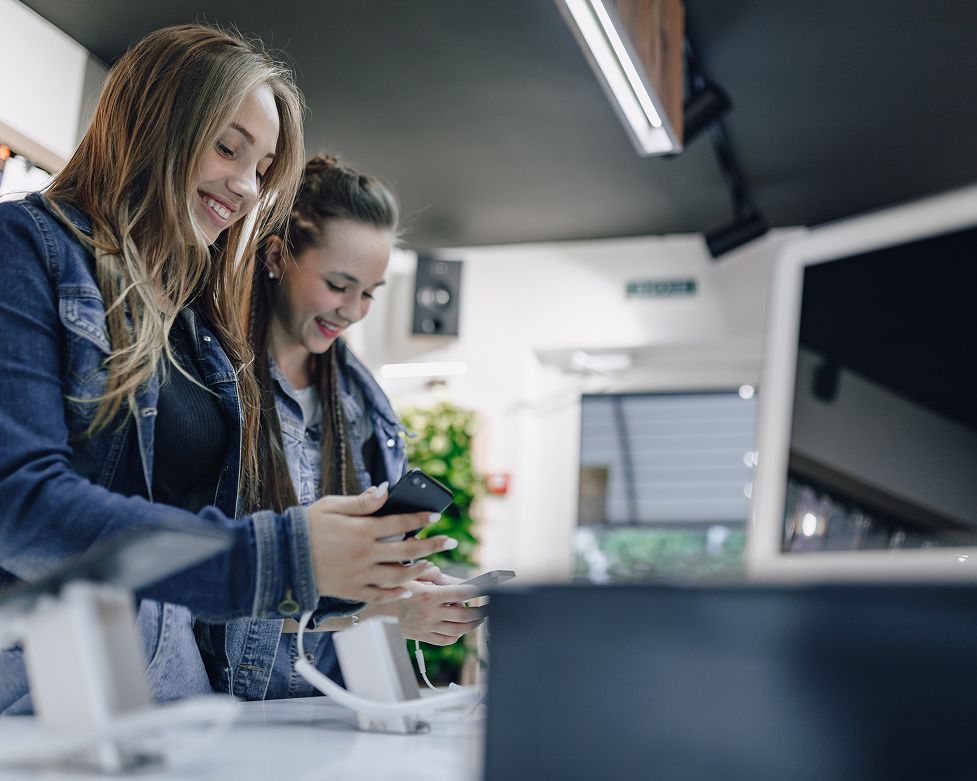
4. One of the Top Online to Offline Marketing Examples: Grocery Store’s Same-Day Pickup via Local Partnerships
A grocery chain partners with local stores to offer same-day pickup for online orders. This online to offline strategy allows customers to order items online and pick them up from a nearby store the same day, providing faster service and making online shopping more convenient.
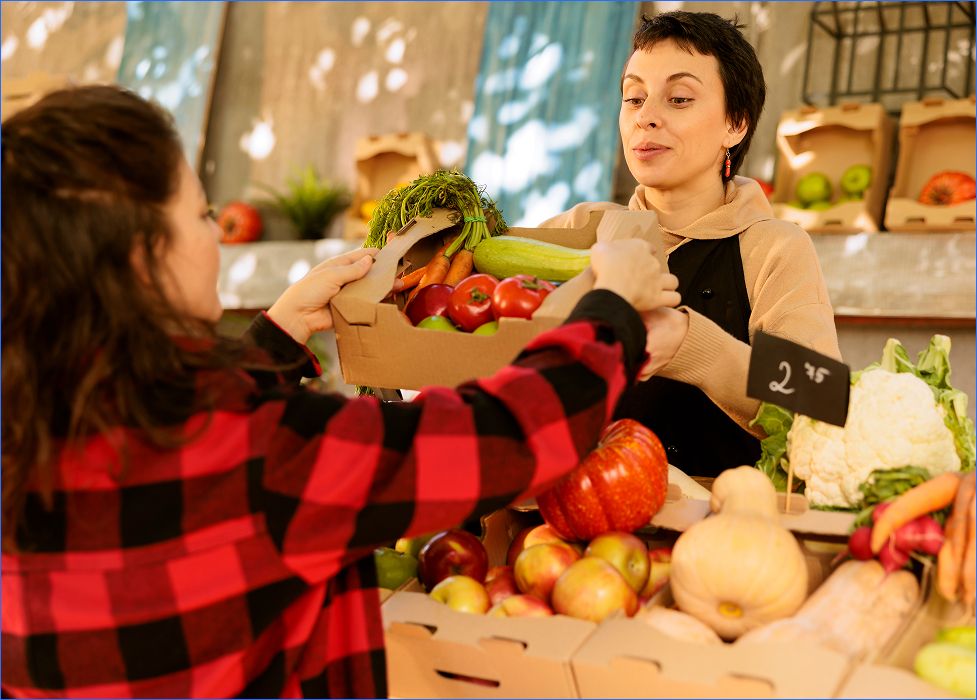
5. One of the Top Online to Offline Marketing Examples: Beauty Brand’s Social Media Integration with In-Store Events
A cosmetics brand uses social media to promote offline events, such as personalised product consultations and exclusive in-store offers. By engaging online followers and encouraging them to visit the physical store, this strategy drives both digital engagement and physical store visits.
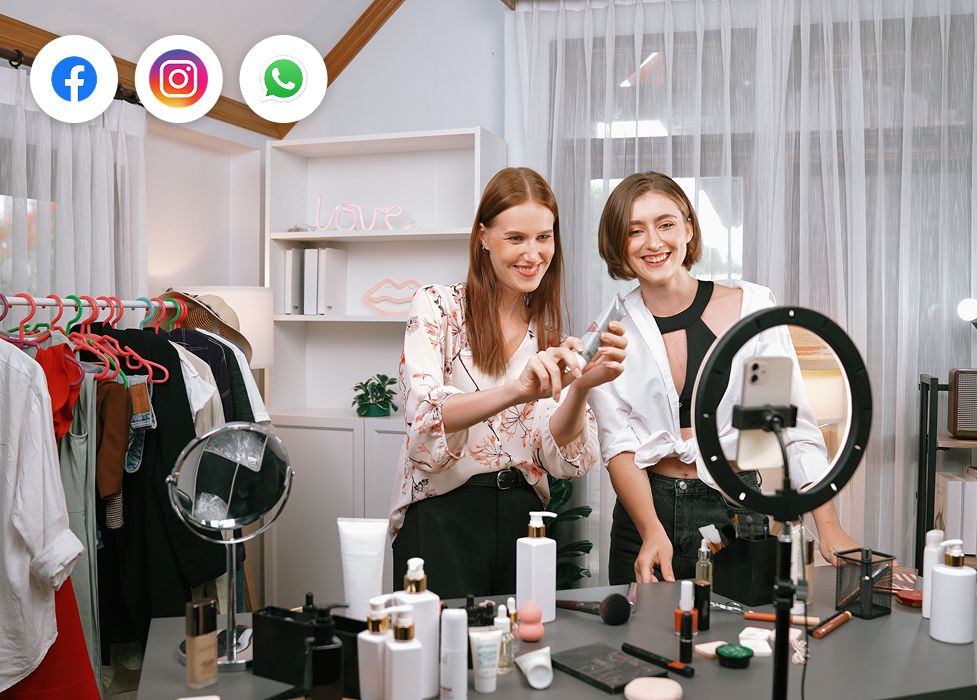
These real-world examples demonstrate how online to offline marketing successfully connects digital and physical experiences, offering valuable insights into effective online to offline marketing strategies.
How to Build an Effective Online to Offline Strategy
Building a high-performing online to offline strategy requires aligning digital touchpoints with physical interactions in a seamless, customer-first approach. The steps below outline how brands can use the best O2O marketing strategies, real-time insights, and hyperlocal engagement to increase in-store visits, strengthen digital to physical experiences, and improve online to offline conversions.
1. Bridge the Digital and Physical Gap with Hyperlocal Targeting
A successful O2O journey starts with connecting online engagement to real-world store visits. Brands must ensure that digital interactions such as ads, social campaigns, or personalised offers translate into offline actions. Using hyperlocal marketing and geofencing campaigns, businesses can deliver tailored promotions to customers near their store, encouraging instant footfall.
Sekel Tech’s hyperlocal solution simplifies this process by delivering precise, personalised messages that drive in-store traffic and support seamless O2O commerce, and you can learn more about this approach in the following video: "Sekel Tech's Hyperlocal Solution: Navigating Challenges in the Era of Online-to-Offline Retail."
2. Strengthen Your Strategy with Data Integration and Real-Time Analytics
An effective online to offline marketing strategy depends heavily on unified data. Retailers need to collect and analyse customer behaviour across digital channels like social media, search, email, and offline interactions such as in-store visits or purchases. Real-time analytics allow brands to identify intent, optimise offers, and deliver relevant experiences that drive both digital engagement and store walk-ins.
Sekel Tech’s AI-driven analytics empower businesses with actionable insights, making their O2O marketing strategies smarter and more impactful. To understand why real-time data plays such a crucial role, watch this video: "Why Real-Time Data Is Critical for Digital Engagement?"
3. Deliver Consistent Customer Experiences Across All Touchpoints
Consistency is the foundation of every high-performing O2O campaign. Whether a customer interacts with your brand online or walks into a physical location, the experience should feel cohesive. Any friction such as slow checkouts, mismatched pricing, or confusing store navigation can disrupt the journey.
Brands can eliminate this friction through loyalty programs, seamless Click and Collect strategies, and unified omnichannel journeys. Sekel Tech’s omnichannel platform ensures that your online to offline marketing examples remain consistent and trustworthy across all touchpoints, as explained in this video: "Consistency and Trust: Sekel’s Solution for Branding Across Sales Touchpoints."
4. Track and Measure O2O Performance for Better ROI
Measuring the success of online to offline marketing strategies is critical for long-term growth. Retailers must track conversions from digital channels to offline visits through call tracking, UTM parameters, unique URLs, and footfall attribution tools. This enables brands to see which digital activities are truly driving in-store purchases.
Sekel Tech’s advanced analytics platform provides end-to-end tracking for O2O conversions, helping businesses refine campaigns and maximise ROI. For deeper insights into how tracking works, see this video: "Converting Clicks to Footfall: Challenges in Online-to-Offline Tracking."
5. Overcome Technology Barriers with a Unified O2O Platform
Many businesses struggle with implementing O2O technologies such as geofencing, mobile apps, real-time data syncing, or CRM automation. Without the right tech stack, executing the best O2O marketing strategies becomes challenging and inefficient.
Sekel Tech’s all-in-one O2O platform simplifies this by integrating digital engagement, hyperlocal ads, lead management, and store-level analytics into a unified ecosystem. This empowers brands to run more efficient O2O campaigns, enhance digital to physical experiences, and convert online interest into store visits. You can explore these challenges further in this video: "What Are the Biggest Challenges Dealers and Distributors Face with Digital Leads and Sales?"
By incorporating these essential steps, brands can build a comprehensive and effective online to offline strategy that unifies digital touchpoints with offline retail execution. This integrated approach enhances customer engagement, drives in-store traffic, and helps businesses unlock the full potential of O2O commerce and a strong hyperlocal marketing strategy.
To explore the evolving dynamics between online and offline shopping, check out this insightful article by Times of India.
Frequently Asked Questions (FAQs)
1. What does O2O stand for?
Online to Offline (O2O) is a marketing approach that guides customers from online engagement to real-world actions. It uses digital channels like ads, social media, and email to drive in-store visits, offline purchases, and seamless digital-to-physical conversions.
2. What is the O2O marketing strategy?
O2O marketing, or Online to Offline Marketing, connects digital channels with physical locations, driving online users to take offline actions like visiting stores or making purchases. It seamlessly integrates online efforts with offline engagement to boost sales.
3. How do I convert offline customers to online?
Encourage offline customers to go online by offering special online-only deals, launching digital loyalty programs, and using QR codes or website links during in-store visits. These strategies help seamlessly transition customers to your online platforms.
4. Which is better: online market or offline market?
Choosing between online and offline markets depends on your business needs and target audience. Online markets offer extensive reach and convenience, while offline markets focus on direct interaction and local engagement. A combination of both strategies can boost brand awareness and customer loyalty.
5. What is an example of online and offline marketing?
An example of online and offline marketing is providing an online discount code that customers can redeem at a physical store. This strategy merges digital offers with offline interactions, encouraging customers to connect with both online and in-store experiences.
Conclusion
In conclusion, combining online to offline marketing efforts is essential for creating a seamless and integrated customer experience that bridges the digital and physical worlds. By leveraging an online to offline strategy, businesses can enhance customer engagement, drive foot traffic, and ultimately boost conversions. It's time for businesses to embrace online to offline marketing strategies and explore how they can implement these tactics to stay competitive and deliver more personalised, impactful experiences. Don't miss the opportunity to take your marketing efforts to the next level and achieve greater success from online to offline.
Take Advantage of Sekel Tech’s Online to Offline Marketing Platform
Unlock the full potential of your marketing efforts with Sekel Tech’s Online to Offline Marketing Platform. Our platform seamlessly integrates online to offline marketing strategies, using geotargeting, social commerce, and real-time analytics to drive foot traffic and increase in-store sales. By leveraging Sekel’s powerful tools, you can personalise customer experiences, track conversions, and optimise ROI. Ready to transform your marketing strategy? Contact us today to discover how Sekel Tech can help you bridge the gap between online and offline experiences.
Share
Similar Blogs
Loved this content?
Sign up for our newsletter and get the latest tips & updates directly in your inbox.
There’s more where that came from!